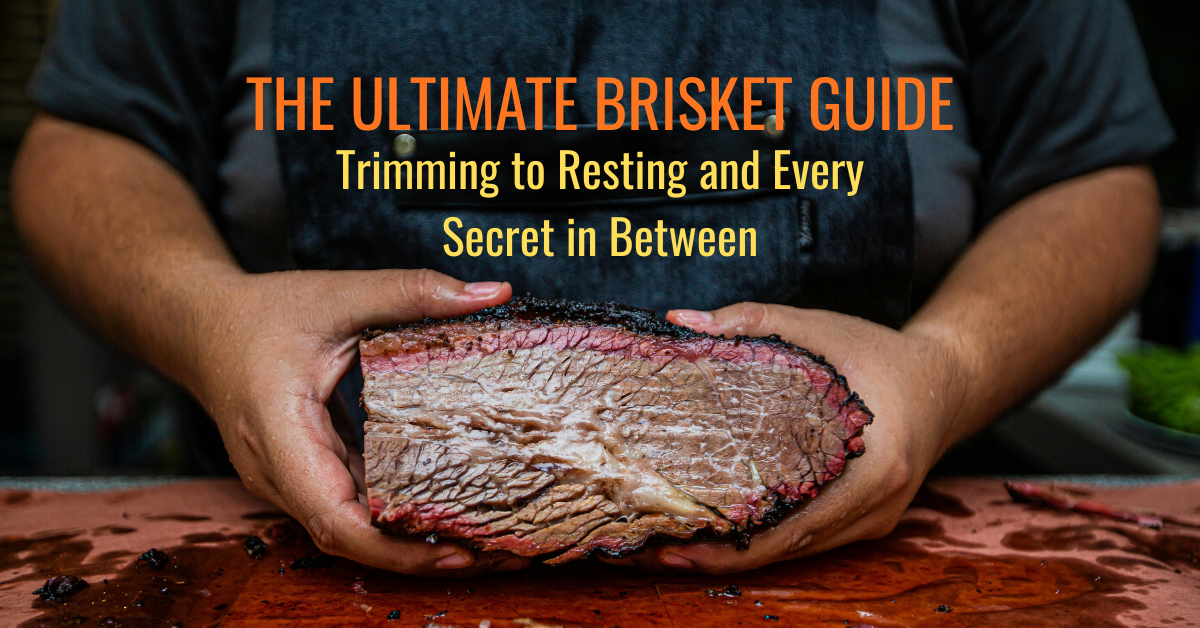You’ve seasoned your meat, chosen the perfect wood, and fired up the smoker, only to watch the temperature swing from 180°F to 300°F. Sound familiar? These unstable temperatures are the number one reason beginners end up with dry brisket or undercooked ribs.
Keeping your smoker steady can feel like a constant battle against wind, leaky lids, or mysterious heat drops. You are not alone, even experienced pitmasters struggled with this when they first started.
Here’s the good news: once you understand how airflow, fuel, and heat interact, smoker temperature control becomes second nature. This guide will teach you exactly how to stabilize your smoker—from adjusting vents to recovering from sudden drops. No more guesswork, just consistent results.
Spoiler: one simple tool, a water pan, can stabilize your temps better than most gadgets on the market.
Why Temperature Control Matters
Barbecue is all about low and slow. The ideal range for most smoking is 225–250°F (107–121°C).
- Too low (<200°F / 93°C): Meat may dry out before collagen has time to break down.
- Too high (>275°F / 135°C): Fat does not fully render, meat turns out chewy or tough.
- Frequent fluctuations: Cause uneven cooking, tough bark, or dried-out spots.
When you lock in your temps, you unlock tenderness, bark development, and smoke flavor that makes BBQ legendary.
Step-by-Step Temperature Control Guide
1. Start with a Clean Smoker
- Problem: Ash and grease buildup block airflow, causing wild temp swings.
- Fix: Scrape the grates, dump the ash, and wipe out the firebox before every cook. Think of it like preheating a clean oven.
2. Master the Vents (Your Smoker’s Thermostat)
- Intake Vent (bottom): Controls oxygen. More open equals hotter fire.
- Exhaust Vent (top): Releases smoke and gases. Keep at least halfway open at all times to prevent stale, bitter smoke.
- Golden Rule: Adjust vents in small moves (¼ inch at a time) and wait 10–15 minutes to see the effect.
3. Use the Minion Method (Charcoal Smokers)
- How: Create a pile of unlit charcoal and add 10–12 lit coals on top.
- Why: The fire spreads gradually, giving you a long, steady burn instead of sudden flare-ups.
- Pro Tip: Use briquettes for stability, lump charcoal for hotter burns.
4. Add a Water Pan (The Secret Stabilizer)
- How: Place a pan filled with hot water directly under the cooking grate or next to the firebox.
- Why: The water absorbs heat, prevents spikes, and adds humidity that keeps meat moist.
- Bonus: You can add apple juice, beer, or aromatics for a subtle flavor boost.
5. Check for Leaks
- Test: Close your vents. If smoke escapes around the lid or firebox, you are losing control.
- Fix: Seal gaps with high-heat gasket tape or use clamps to tighten loose lids.
6. Recover from a Temp Drop or Spike
- Too Cold: Open the intake vent slightly and add a few lit coals or small wood splits.
- Too Hot: Close the intake vent by 25 percent and avoid lifting the lid. Give the smoker time to settle.
Pro Tips for Different Smokers
Charcoal Smokers (Weber Kettle, WSM)
- Best Fuel: Briquettes for consistent burns, lump for higher temps.
- Watch For: Wind can pull heat from thin metal smokers. Use a simple windbreak made of plywood or even your garage wall.
Pellet Smokers (Traeger, Pit Boss)
- Set It and Forget It? Almost. Still, keep your hopper full and clean out the fire pot. Ash buildup can cause temperature drops mid-cook.
Offset Smokers (Stick Burners)
- Tend the Fire: Add a small log every 45–60 minutes for even heat.
- Pro Move: Preheat logs on top of the firebox before adding them. This reduces white smoke and prevents temp swings.
Electric and Gas Smokers
- Struggle Point: Hard to maintain very low temps.
- Solution: Use a smoke tube or wood chip tray to enhance smoke flavor.
Common Mistakes (And How to Fix Them)
🚫 Opening the Lid Too Often
- Every peek drops temps by 10–15°F.
✅ Fix: Use digital probes and resist the urge to check. Only open for spritzing, wrapping, or pulling meat off.
🚫 Overcorrecting Vent Adjustments
- Swinging vents wide open then slamming them shut causes chaos.
✅ Fix: Make small adjustments, then wait at least 10 minutes before touching again.
🚫 Ignoring the Weather
- Cold, wind, or rain steal heat.
✅ Fix: Use a welding blanket, thermal jacket, or position your smoker in a sheltered area.
Tools That Make It Easier
- Digital Probe Thermometer: Lets you monitor both grate and meat temps remotely.
- Heat Deflectors or Water Pans: Create indirect zones and stabilize temps.
- Fire-Resistant Gloves and Long Tongs: Safe adjustments without burns.
- BBQ Logbook: Record fuel type, vent settings, and weather so you can repeat your best cooks.
Final Verdict: How to Keep Perfect Temps
- Start with a clean, stable smoker.
- Use the Minion Method for charcoal stability.
- Adjust vents slowly, like turning a thermostat.
- Add a water pan for an easy buffer.
- Monitor temps with a good digital thermometer.
- Practice makes perfect: run your smoker empty and hold 225°F for two hours before your next big cook.
Once you master fire management, you will stop fighting your smoker and start enjoying the process. The reward is tender brisket, juicy ribs, and the confidence of a true pitmaster.
What’s your biggest struggle with smoker temperature control? Share your tips, wins, or disasters in the comments below so others can learn.
👉 Ready for the next step? Check out our guide on How to Beat the Stall Without Ruining Your BBQ and make sure your perfectly managed fire delivers perfectly cooked BBQ.




